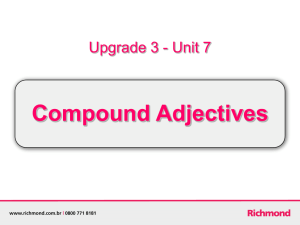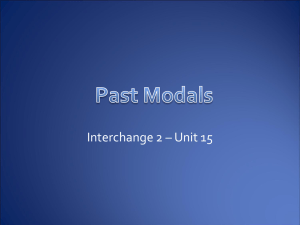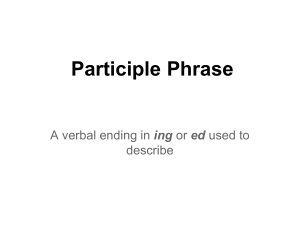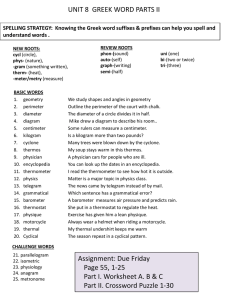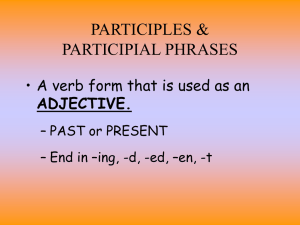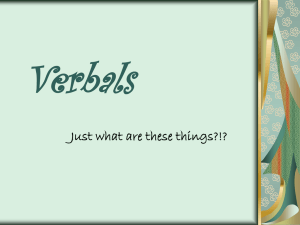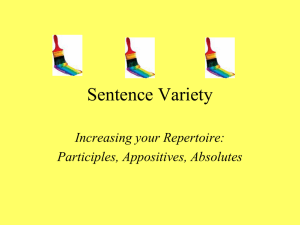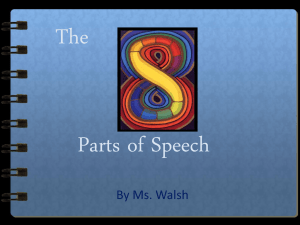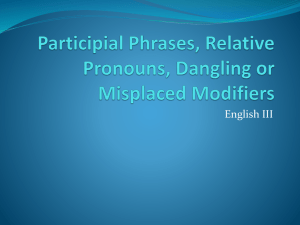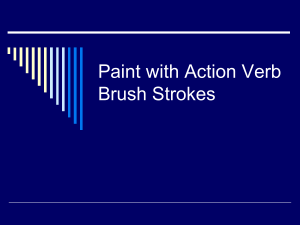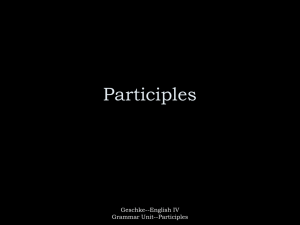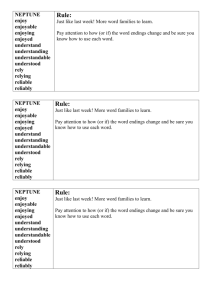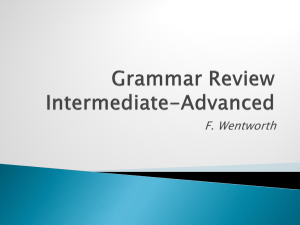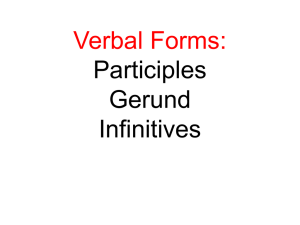Unit 9
advertisement
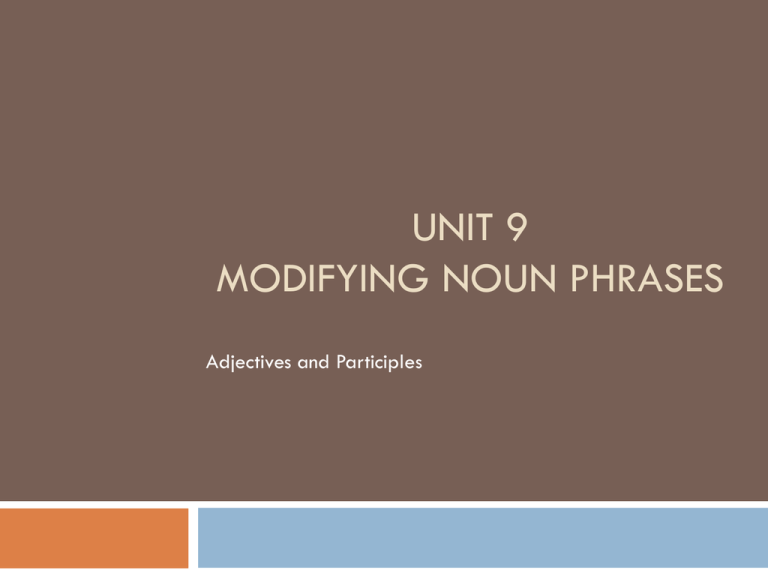
UNIT 9 MODIFYING NOUN PHRASES Adjectives and Participles Focus 1: Overview of Word order in Noun Phrases What’s a noun phrase? A determiner and a noun, plus its modifiers. So then what’s a determiner? Determiners can be articles (a, an, the), demonstratives (this, that, these, those), possessives (my, your…), quantifiers (some, many…) What’s a modifier? Modifiers include adjectives, participles, nouns, prepositional phrases, participle phrases and relative clauses Order for Categories of Modifiers Determiner Intensifiers Adjectives and Participles Noun Modifier Noun Modifying Phrase The/a/an Really Old/new Stone Wall Next to the river Some/no Very Interesting University Campus River My/your Slightly Well-known described Each/every These/those In the brochure Focus 2-Order of Descriptive Adjectives Evaluation/opin ion Appearance Age Color Origin Good Size/measureme nt (big) Old Red Geographical (French) Interesting Shape (round) Antique Purple striped Material (vegetable) Intelligent Condition (broken) New Bright blue wooden Put these words in the right order to make the sentence correct: 1. broken, dish, an, ceramic, ugly, white 2. Car, a, little, funny, metal 3. rubber, blue, a, ball, pretty, new 1. An ugly broken white ceramic dish. 2. A funny little metal car. 3. A pretty new blue rubber ball. Focus 3-Particple modifiers Participles can be used like descriptive adjectives to describe nouns too. Verb Present participle Past participle Study Studying Studied Forget Forgetting Forgotten Interest Interesting Interested Just add –ing for present participle and –ed for past participle but don’t forget about irregulars! Focus 4-Meaning of Participles That movie was boring. We were bored. It was an interesting novel, but I wasn’t interested in the story. We we’re excited to see the movie. I hope the movie is exciting! What is the difference between these sentences? We use present participles (verb +ing) to describe the agent, or the doer in the sentence. We use the past participle to describe receivers. Adding information to Participles Often when we add a noun or an adverb to a participle we use hyphens. Some foot-tapping music (noun+present participle) A fast-moving train (adverb+present participle) Adjective-noun + past participle combinations describe physical characteristics A blue-eyed baby A short-legged dog We don’t always use hyphens, especially with –ly adverbs A deeply depressed individual A manmade lake Focus 6-Modifiers that Follow Noun Phrases Participial phrases can be used to modify a noun phrase and can come before or after the noun and changes the meaning. It comes after the noun to give more information about the particular noun we are talking about. The man speaking to John told him some shocking information. It comes before the noun if it has already been identified and the participle describes more about it. Speaking to the man, John found out some shocking information.
